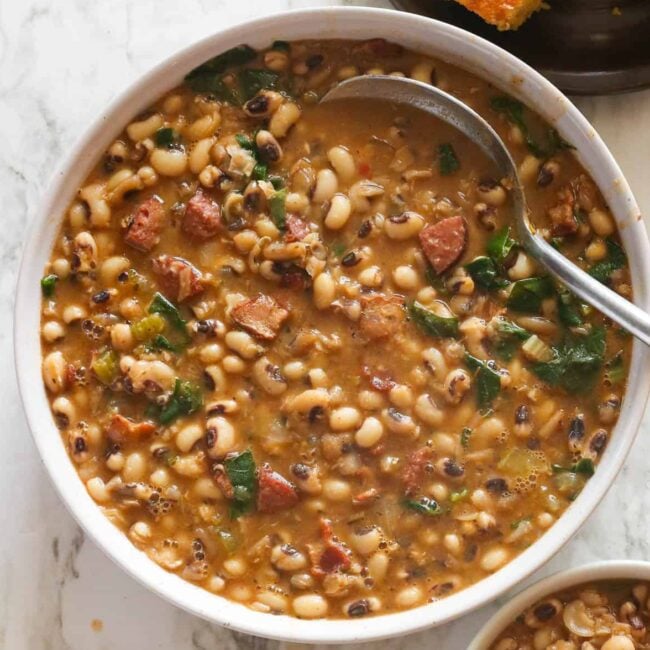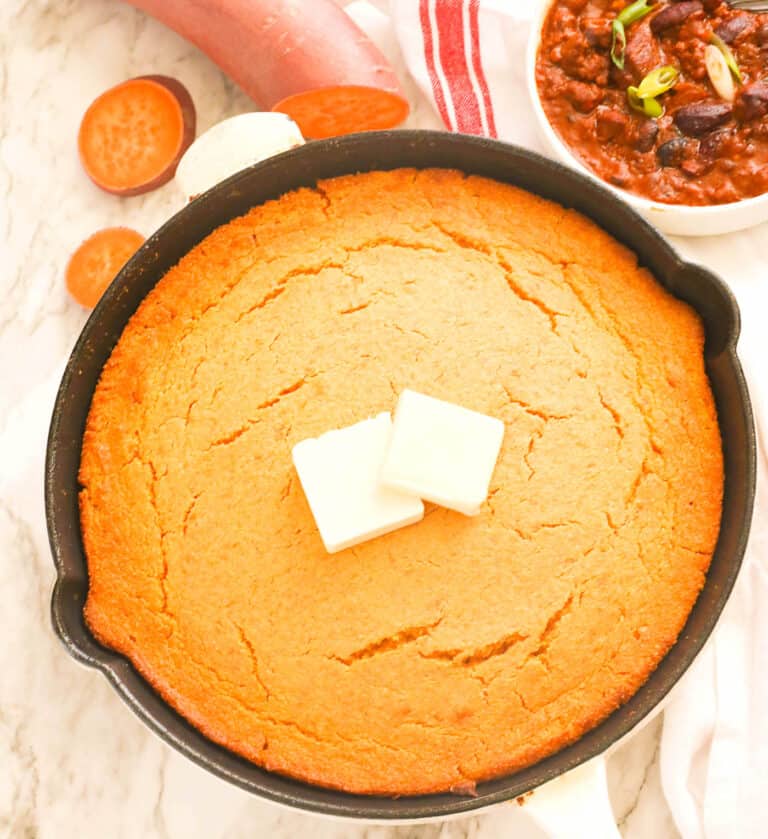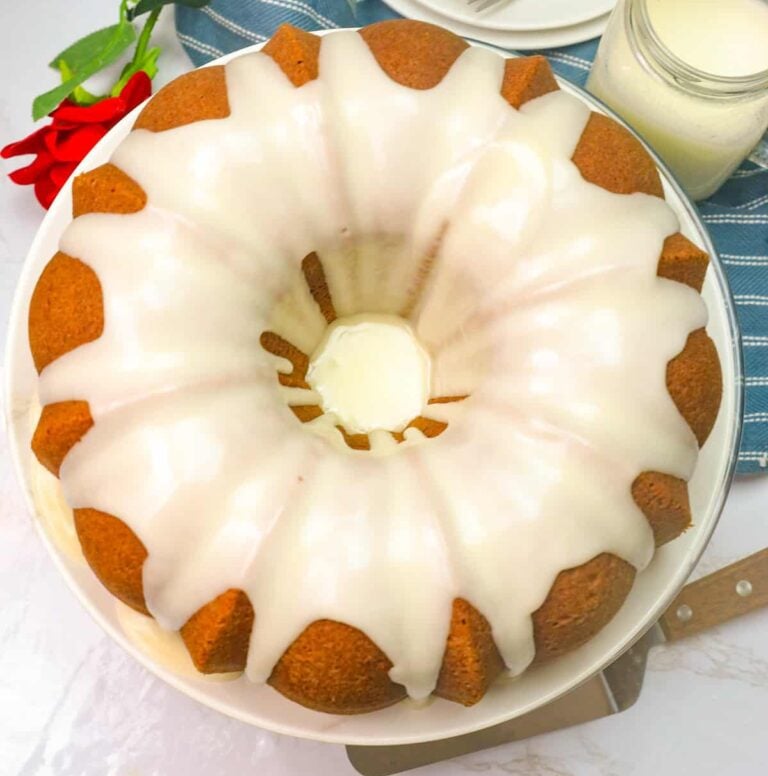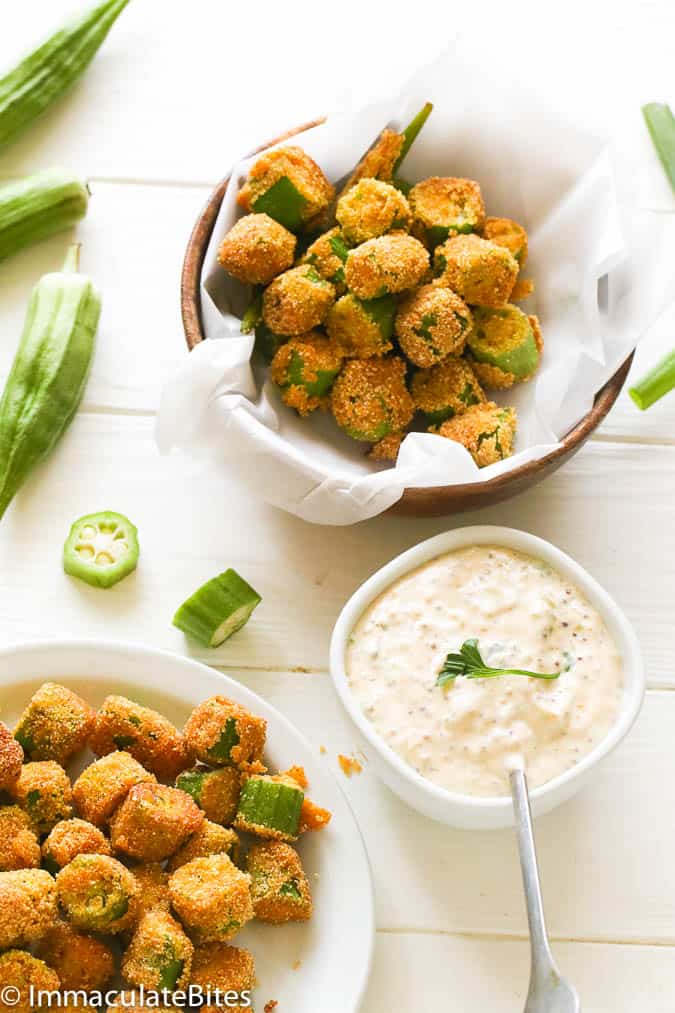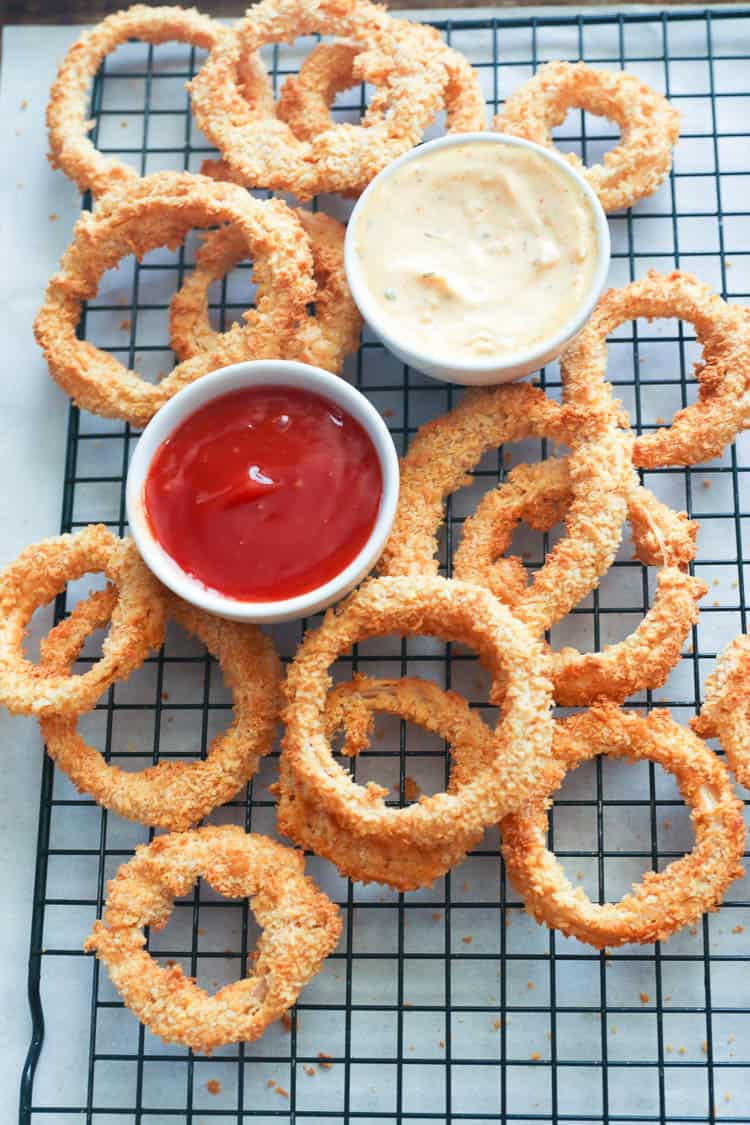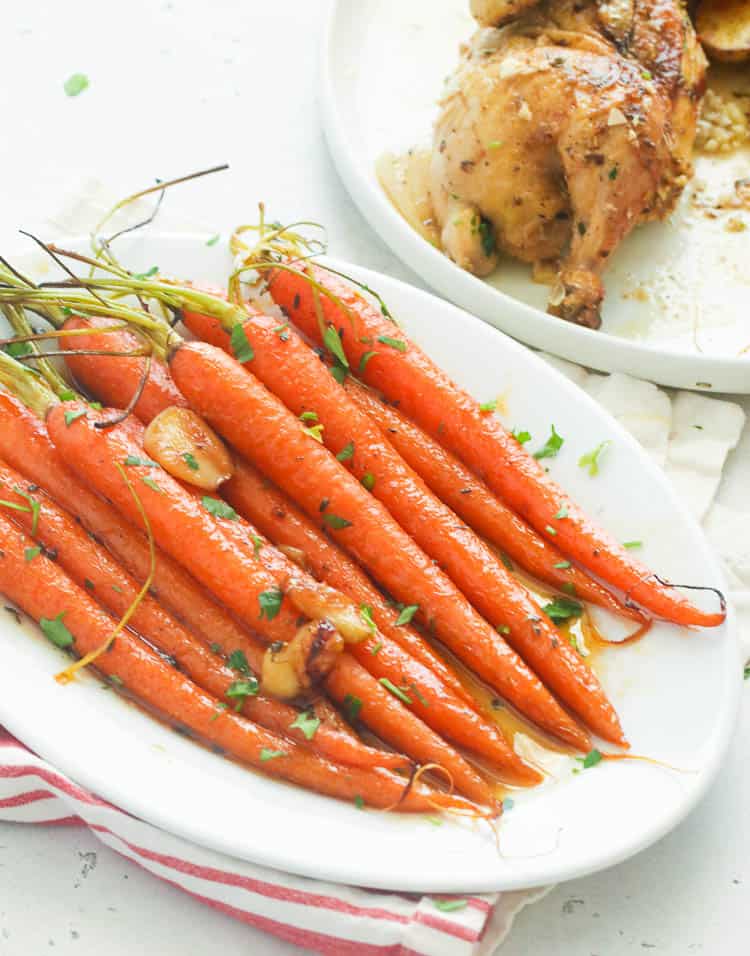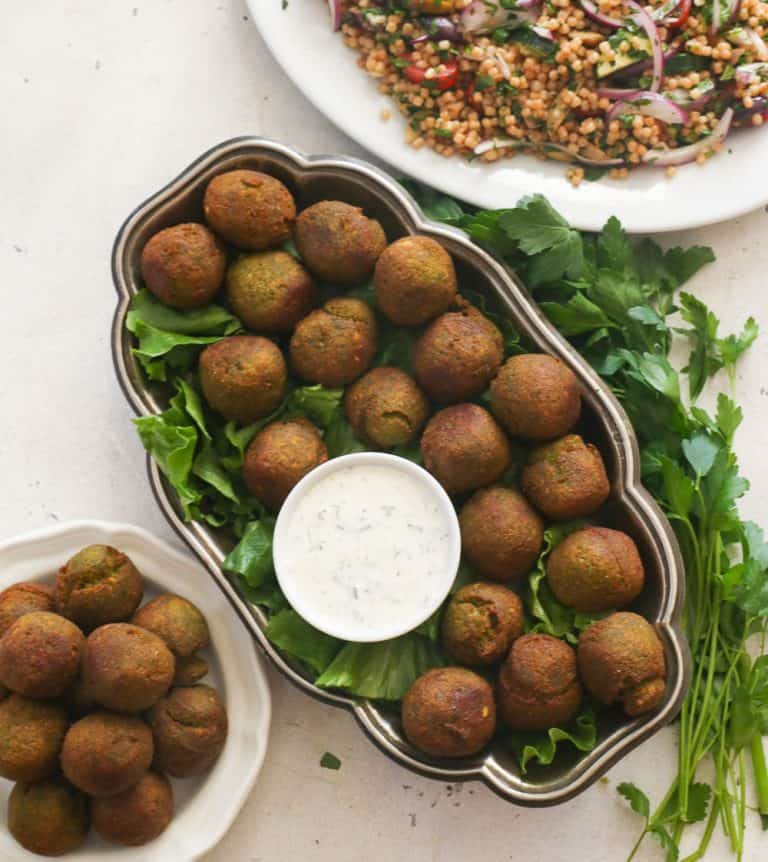Southern Black Eyed Peas Recipe
Southern Black-Eyed Peas, or Hoppin’ John, is a hearty, soul-warming delicacy. This black-eyed peas recipe is smokey, spicy, and pure satisfaction with a deep yet not overwhelming bacon flavor. And it’s a traditional Southern dish served on New Year’s Day to bring good luck!
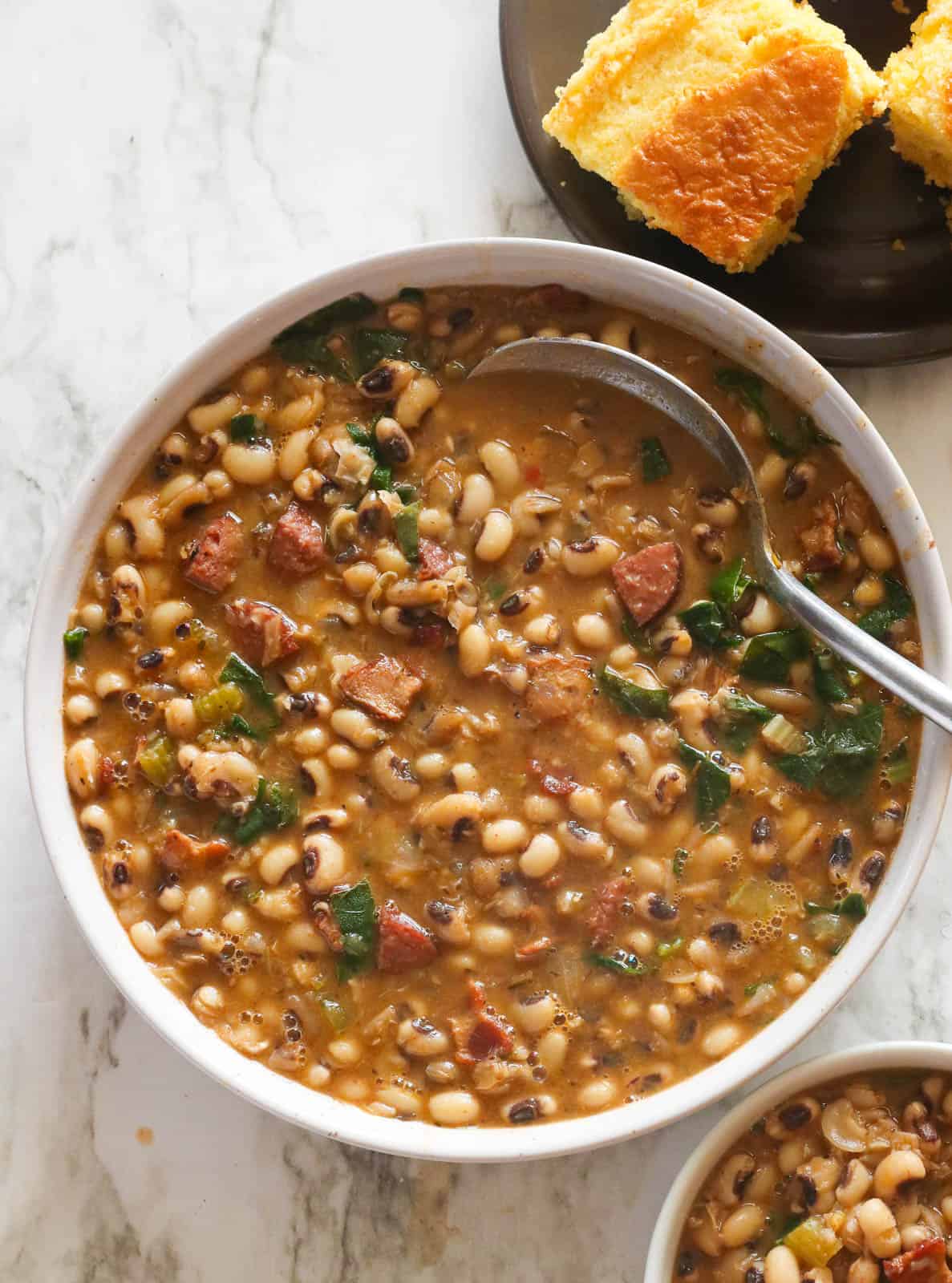
I love anything with beans! Perhaps it started back in grade school when my Auntie cooked beans for dinner in its modest rusticity – onions, salt, and oil, nothing fancy. That simple recipe made all my troubles go away like magic.
And now, this Southern black-eyed peas recipe is the perfect comfort food with soul-satisfying goodness any time of year. It warms us up even in the coldest weather and graces the best cookouts in the heat of summer. This dish will remind you of home and nostalgic, happy memories. ❤️
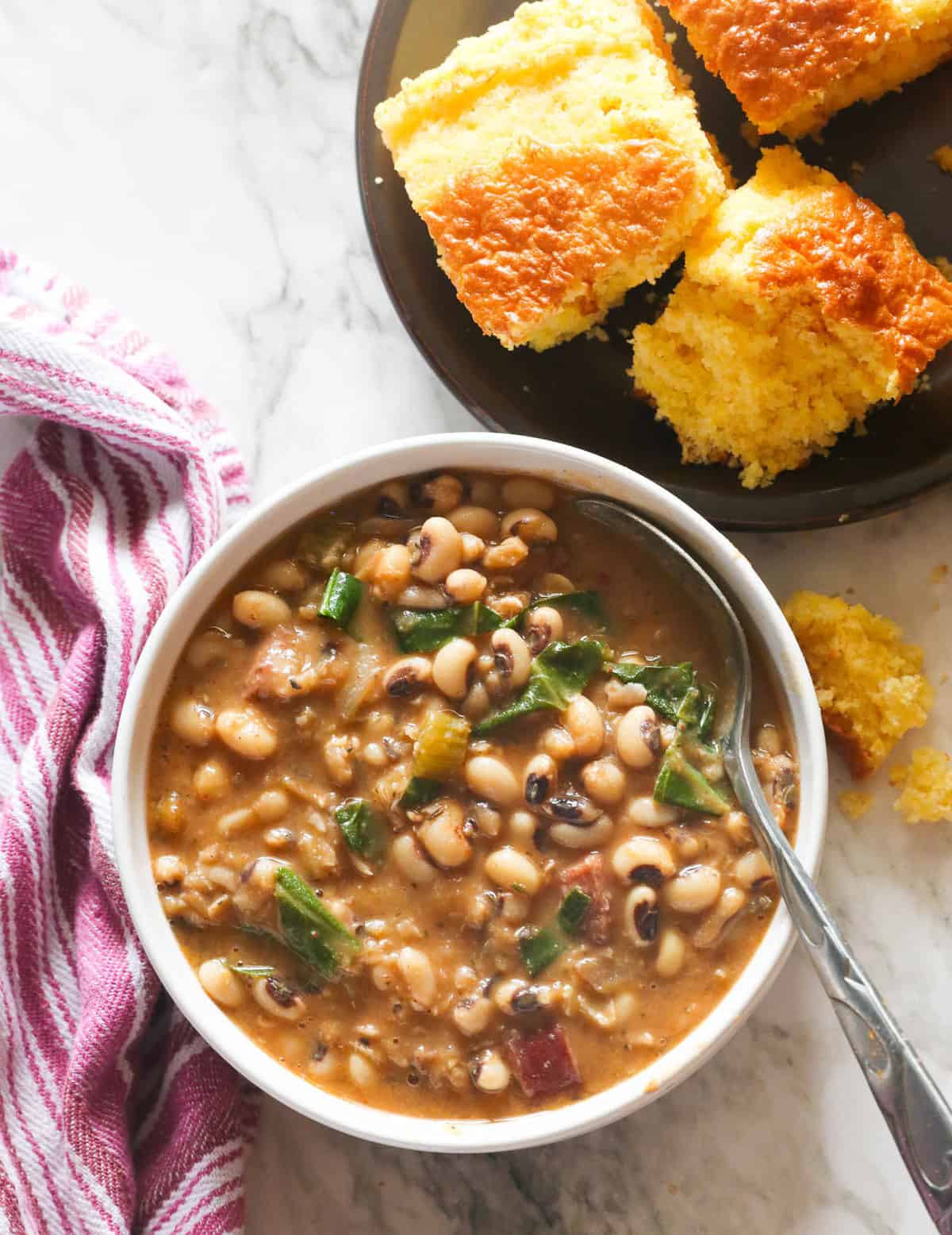
Black-Eyed Peas for More Than New Year’s Good Luck
Black-eyed peas are from my native Africa, and they’re so delicious they became popular worldwide. After arriving in the southern U.S. in the 17th century, they became a symbol of prosperity because they resemble pennies and coins. They grow exceptionally well in the heat and so gave birth to a delicious Southern tradition.
People believe eating black-eyed peas on New Year’s Day brings good luck and a slew of other beautiful things. But that doesn’t mean you can’t enjoy this heartwarming dish all year round.
Recipe Ingredients
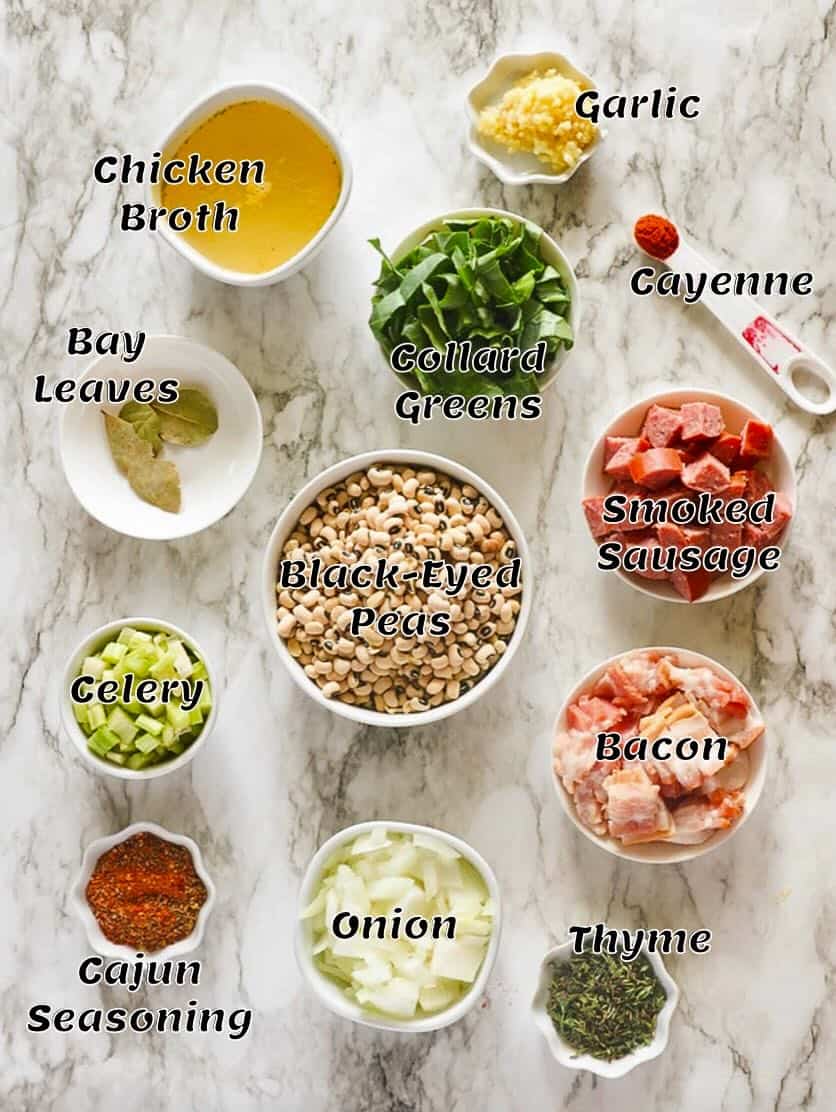
- Black-Eyed Peas offer a slightly smoky flavor and high protein and fiber content, making them nutritious and delicious.
- Meat – Bacon and smoked sausage add flavor and more meaty goodness. Ham hock or leftover smoked turkey are also excellent additions.
- Seasonings – Caramelized onion, garlic, thyme, celery, bay leaf, jalapenos, Creole seasoning, salt, and pepper deliver fantastic smells and flavors. You can kick up the heat more with a dash of cayenne pepper.
- Chicken Broth is the essential liquid bursting with chicken essence and rich umami flavors to simmer the black-eyed peas.
- Collard Greens – Black-eyed beans symbolize pennies. Collard greens, on the other hand, represent bills in this lucky dish. Plus, adding greens makes it more nourishing.
How to Make Southern Black-Eyed Peas
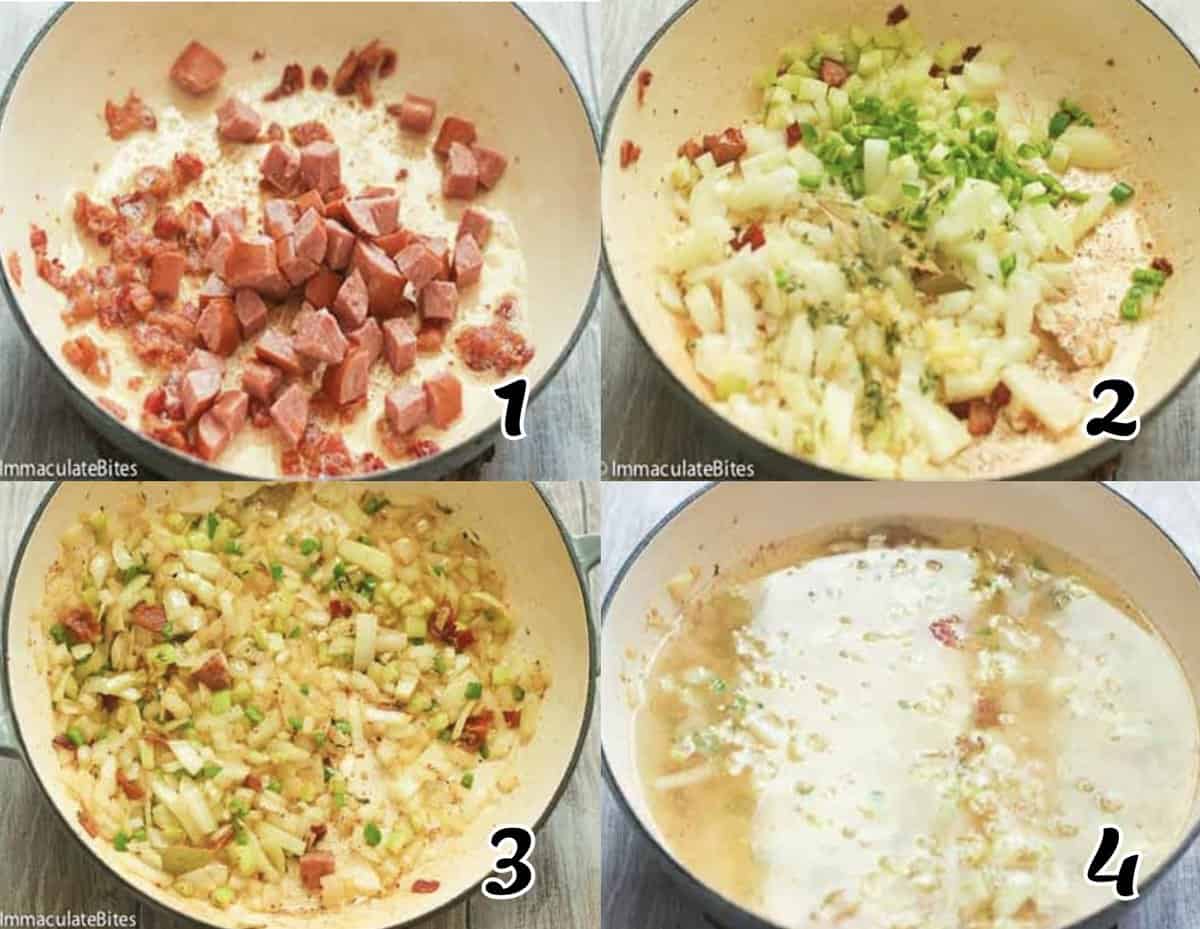
Prep
- Soak – Rinse dry black-eyed pea beans and pick through and discard any foreign object. Add beans to a large pot, covering them with 3-4 inches of cold water. Let sit for 2-3 hours or overnight.
- Cook the Meat – In a large, heavy sauté pan, fry the chopped bacon until brown and crispy (4-5 minutes). Add sausage and saute for another 2-3 minutes. Remove the bacon and sausage mixture and set aside. (Photo 1)
- Saute – Add the onions, celery, garlic, jalapenos, thyme, and bay leaf, and saute for 5 minutes or so until the onions become translucent and the seasonings release their fragrance. (Photos 2-3)
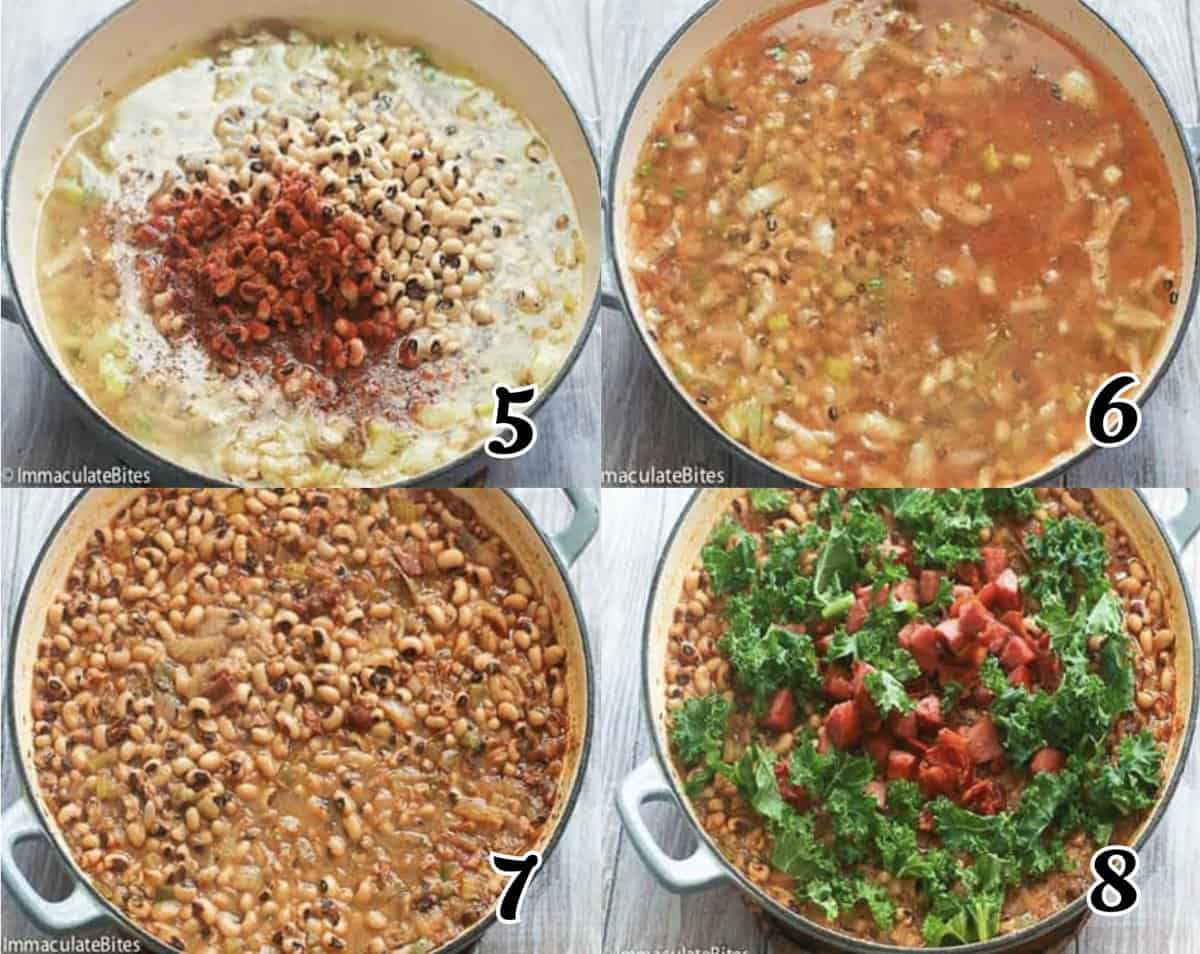
Cook
- Add Liquid – Then pour in the chicken broth or water. (Photo 4)
- Season – Drain the soaked beans, rinse, and place the beans in the pot—season with Creole seasoning and salt to taste. Mix and bring to a boil.
- Simmer – Reduce heat to a simmer and cook, uncovered, for about 20 minutes. (Photos 5-7)
- Assemble– Toss in the collard greens, bacon, and sausage into the pot, and continue cooking for another 10 minutes or more, stirring occasionally, or until beans are tender and slightly thickened to your desire. (Photo 8)
- Final Touch – Add more stock or water if the mixture becomes dry and thick. The texture of the beans should be thick and somewhat creamy but not watery. Remove the bay leaves.
- Serve – Taste and adjust for seasonings with pepper, Creole seasoning, and salt if needed. Serve over cooked rice and garnish with green onion.
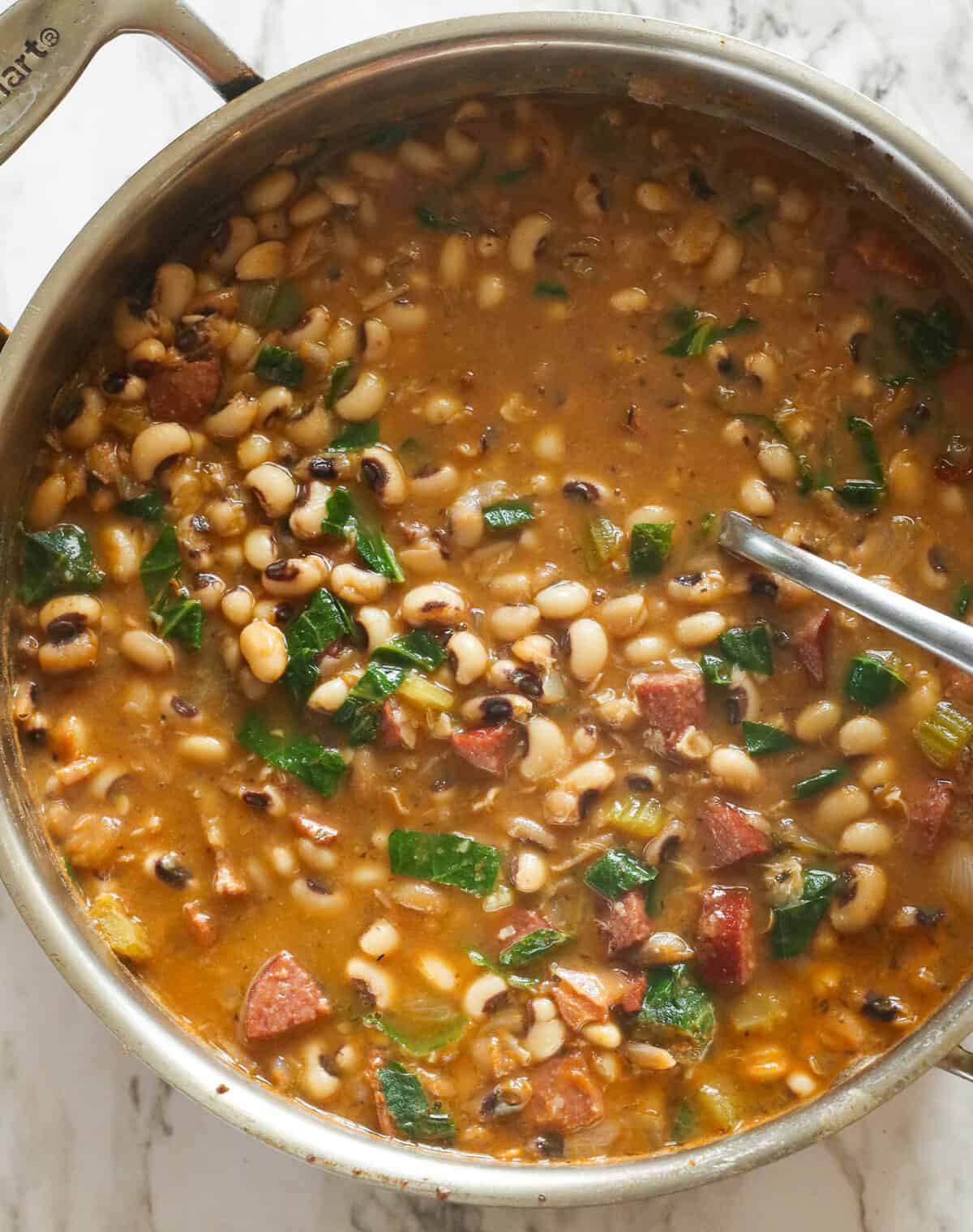
Flavor Variations
- Vegan – Omit the meat and replace the rendered fat with olive oil; then vegetable broth can replace the chicken broth for a vegan version. And to make this dish more nutritious, you can add collard greens, carrots, and bell peppers.
- Crockpot Southern Black-Eyed Peas – This one is more effortless but equally delicious. Put everything in the crockpot, and you’ll have your dinner ready in 5-6 hours on high and about 9-10 hours on low. Imagine the things you can accomplish in those waiting hours. 😉
- Tropical Twist – Make these black-eyed peas with bacon and pork creamy and interestingly yummy with coconut milk. And I bet you’ll love this dish even more.
- Tomato – Fresh tomatoes or tomato sauce will also add a nice variation to this Hoppin John recipe. The kick of tangy goodness will surely make your tastebuds happy.
Recipe Notes
- You can substitute the dried black-eyed peas with canned ones. However, add them 10 minutes before the dish finishes cooking so they have time to heat through because they’re already cooked.
- For a thicker consistency, I suggest mashing a few softened beans against the side of the pot with the back of your spoon. The mashed beans will make a creamier and thicker broth. Or remove about a cup, puree them in a blender or food processor, and then pour the puree back into the pot and give it a good stir.
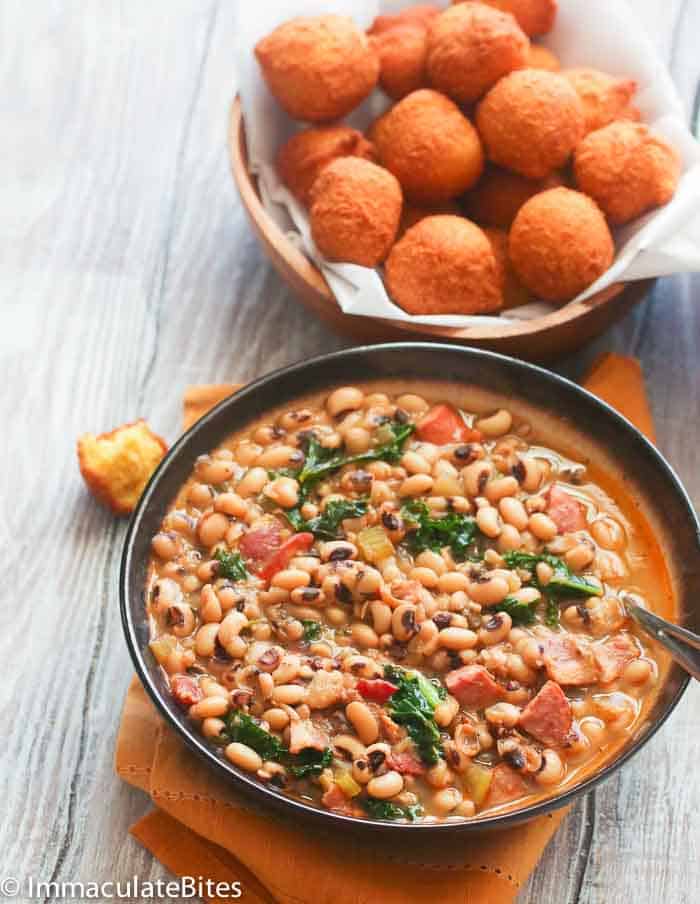
Making-Ahead and Storage
Surprisingly, this bean stew freezes well. So go for it and make a large batch. It’ll come in handy when a soul-food craving hits.❤️ Transfer the black-eyed peas stew into a clean, airtight container or heavy-duty freezer-safe ziplock bags once cooled.
Refrigerate for 3-5 days or freeze for 6 months. Pack them in a freezer bag, either the whole thing or in single-serving sizes, for easy thawing and reheating. Thaw overnight in the fridge when ready to serve. Reheat in a pan on medium-low heat or in a microwave. You may add more chicken broth or water as needed.
FAQs
Technically, you don’t need to soak black-eyed peas. However, soaking them for a few hours or overnight shortens the cooking time. It’s totally up to you.
Adding bacon, sausage, and seasonings intensifies this dish’s flavor. But to take this dish to another level, add tomato sauce or coconut milk.
As a tradition, Southerners put clean pennies and dimes into their pot of black-eyed peas, believing they’ll bring luck and prosperity. They believe the one who gets the most coins in their bowl is the luckiest.
What to Serve With Black-Eyed Peas on New Year’s Day
Double your luck by serving this black-eyed peas recipe with collard greens (representing money) and cornbread (for gold). Pork (because it roots forward) will complete a traditional New Year’s dinner. No lobster or chicken if you’re going for good luck. Oven-baked pork chops, smoked bacon-wrapped pork tenderloin, or fried pork chops are all good.
More Traditional Southern Dishes to Try
- Southern Mac and Cheese
- Butter Biscuits
- Southern Fried Cabbage
- New Orleans BBQ Shrimp
- Southern Deviled Eggs
Watch How to Make It
[adthrive-in-post-video-player video-id=”8AgprXDl” upload-date=”2019-04-01T07:08:53.000Z” name=”Black Eyed Peas Recipe” description=”Southern Black Eyed Peas Recipe or Hoppin’ John is a hearty, warm and soulful food. This black eyed peas recipe is smokey, spicy with a deep yet not too overwhelming bacon flavor. A Southern traditional dish served on New Year’s Day to bring good luck charm!”]
This blog post was originally published in December 2017 and has been updated with additional tips, new photos, and a video

